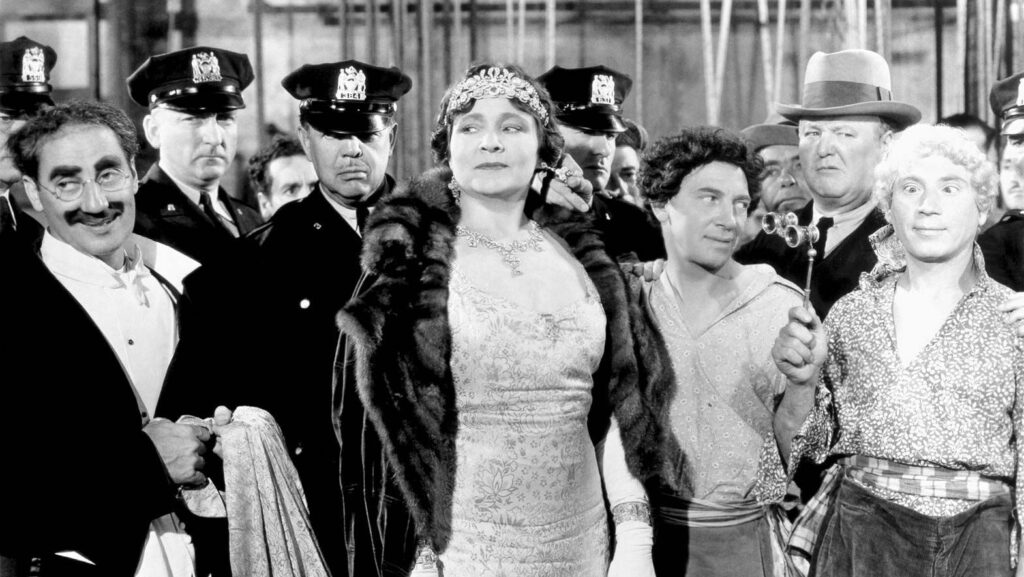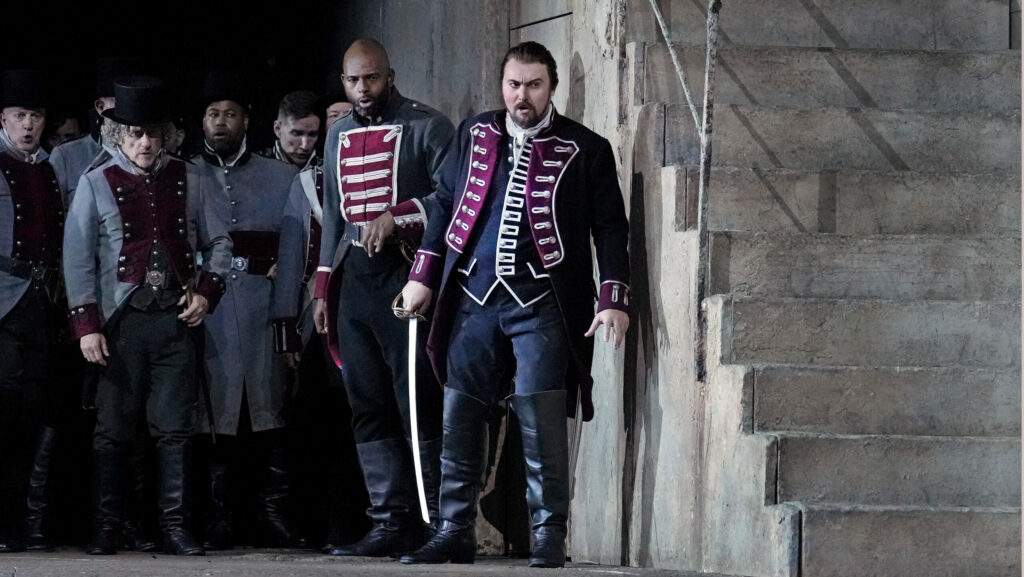It’s flu season in New York, and the Met’s current Trovatore run has been cursed by various ailments including tenor Michael Fabiano’s twisting his ankle on opening night. But nothing compares to Sunday’s performance, with a few planned changes of cast resulting in a whole lot of unplanned changes mid-performance. Angela Meade was announced as ill at the beginning of the performance, and after the intermission it was announced that she would be replaced by Leah Hawkins for the remaining two acts. It was also announced after the intermission that Michael Fabiano was feeling ill but would continue; after visibly struggling through “Di quella pira” he was replaced, unannounced, by Arturo Chacón-Cruz for the final act. David McVicar’s Goya-esque production features rotating sets, with the unintended result that you never knew who would be onstage in the next scene.
Despite all the backstage drama it ended up being an oddly compelling performance, certainly far more musically exciting than the tentative opening night. It’s often been said that Leonora is a role that requires two different sopranos – it’s rare to find a singer that can pull off the bouncy coloratura of “Di tale amor” as well as the chesty drama of the “Miserere.” In that sense, we were fortunate to have two sopranos well suited to their respective arias. Even while sick, Meade pulls off the coloratura of “Di tale amor” better than pretty much any other Leonora singing today, with clean passagework and a neat trill. She also floats nicely in “Tacea la notte” and, whether because of her recent move into bigger repertoire or because of her illness, has gained access to a potent chest voice that lends rhythmic incisiveness to the trio.

It’s never been a voice that readily soars thanks to her rapid vibrato, and in that sense we were lucky to have Leah Hawkins take over for the big Act IV scena. The Met has been pushing her as their next big Verdi soprano and it’s easy to see why – she has a sumptuous, weighty voice, with a powerful middle and chest register and lovely floated high notes. It’s a voice ideally suited to the Met, with a presence and resonance that fills the auditorium, and if her phrasing and acting were tentative at times it’s fully understandable given the circumstances. Let’s hope the Met gives her more opportunities to develop her artistry, because it’s clearly a first-rate voice.
Hawkins also had the unenviable task of having to sing opposite two Manricos, particularly as it became evident that Fabiano would not make it through the performance. Given the circumstances and high notes aside, Fabiano pulled off a decent “Di quella pira”, taken at quite the pace, as well as a sensitive “Ah si, ben mio” with plangent tone and elegant phrasing. He attacked the first two acts with his usual intensity, full of ringing sound and machismo. He was also the most sympathetic actor onstage, bounding around the stage with enthusiasm having recovered from his ankle injury. I was surprised to hear that this jump-in would be Arturo Chacón-Cruz’s Met debut – he’s been performing leading roles in the US and Europe since winning Operalia two decades ago. His voice is a bit light for the role in a house the size of the Met, but he’s an exciting actor with plenty of Italianate style. He’d be a useful asset for the Met in a range of repertoire.
Olesya Petrova was the other (planned) cast change from the opening, and she’s a frustratingly inconsistent Azucena. It’s a glassy, somewhat metallic voice with a ringing high C and a cavernous lower register which she navigates without any ungainly register shifts. “Stride la vampa” caught her at her worst, with bumpy articulation and unstable pitch, but immediately after she pulled off a thrillingly deranged “Condotta ell’era in ceppi.” She was also variable dramatically, pulling off the high-stakes moments like “Condotta” and the final scene while remaining an anonymous presence in between.
As the only holdovers from the opening night cast, Igor Golovatenko and Ryan Speedo Green were much the same; the former impressive in vocal weight and color but somewhat blunt in his phrasing of “Il balen,” the latter pulling off a surprisingly agile account of the opera’s opening aria. Conductor Daniele Callegari must be commended for keeping the performance together and adapting well to the planned and unplanned cast changes, and in spite of it all managed to pull off an exciting, coherent performance.
Photo: Ken Howard






Comments